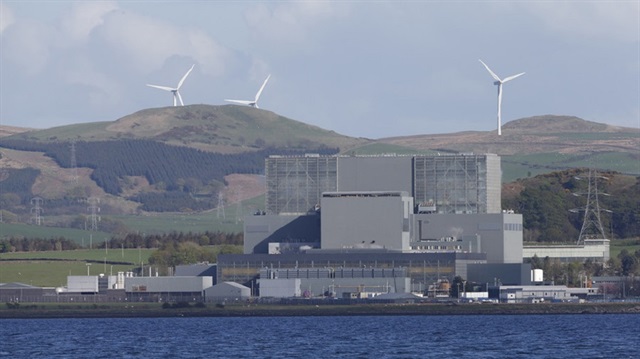
A nuclear reactor at EDF Energy's Hunterston B power plant in Scotland will remain offline for additional checks on cracks found in bricks in the reactor core, Britain's Office for Nuclear Regulation (ONR) said.
In March, ONR was informed that additional keyway root cracks had been found during recent planned inspections of the graphite bricks that make up the reactor's core
The reactor has been offline since March and was due to come back online this month but EDF Energy has extended the outage until later this year, pending further assessment of the most recently identified keyway root cracks.
"Inspections confirmed the expected presence of new keyway root cracks in the reactor core and also identified these happening at a slightly higher rate than modelled," EDF Energy said in a statement.
"EDF Energy has decided that, while Hunterston B Reactor 3 could return to operation from the current outage, it will remain offline while the company works with the regulator to ensure that the longer term safety case reflects the findings of the recent inspections and includes the results obtained from other analysis and modelling," it added.
Hunterston B in North Ayrshire, Scotland, has been generating electricity since 1976. Last year, it produced enough electricity for 1.8 million homes.
It has two Advanced Gas-cooled Reactors. These are called Reactor 3 (Turbine Generator 7) and Reactor 4 (Turbine Generator 8).
Reactors 1 and 2 are on the Hunterston A site and are being decommissioned.
During the time it is offline, EDF might carry out additional planned routine maintenance.
It expects the reactor to return to service "before the end of 2018". EDF Energy's outage website is showing an expected return date of Oct. 4.
The extended outage will result in a reduction of its 2018 nuclear output of 3 terrawatt hours, the company said.
The operation of EDF Energy's remaining nuclear reactors in Britain is not affected.
EDF Energy will need ONR's permission to restart the reactor, and ONR will assess the adequacy of EDF’s safety case for the longer-term operation of the reactor, the regulator said.
Hello, the comments you share on our site are a valuable resource for other users. Please respect other users and different opinions. Do not use rude, offensive, derogatory, or discriminatory language.
The floor is all yours.








